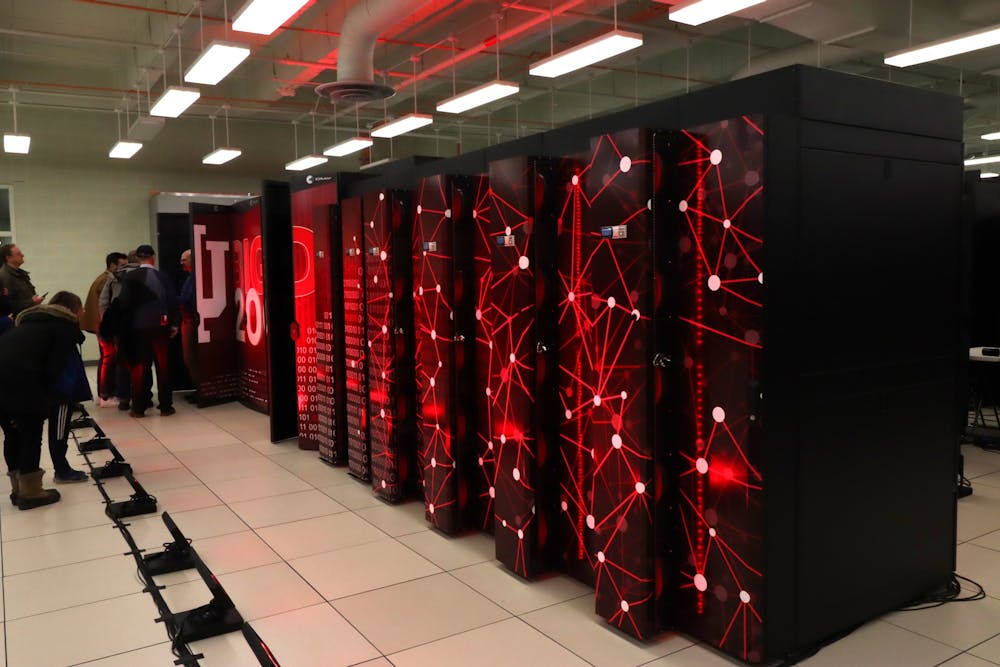IU introduced its newest supercomputer, Big Red 200 replacing Big Red II as part of the university’s bicentennial celebration. It allows researchers greater access to more data points and the ability to better analyze them for research.
Hundreds of people attended the ceremony Monday at IU’s Cyberinfrastructure Building. IU is the first place in the world to get this supercomputer, which costs $9.6 million.
IU President Michael McRobbie opened the ceremony by discussing the university’s past supercomputers and said Big Red 200 is almost 300 times faster than the original Big Red, which was installed in 2006. He said IU is now poised to be at the forefront of artificial intelligence research.
“It is now the overwhelming consensus of industry and academia that artificial intelligence has entered the mainstream,” McRobbie said.
Staff, faculty and graduate students can use the supercomputer for research purposes. Select undergraduate students who are sponsored by or assisting staff or faculty can also use it.
Brad Wheeler, who leads IT services for IU's eight campuses, said Big Red II had to be replaced because it’s outdated. Most supercomputers only last five to six years, and IU had been using the Big Red II for seven. It has primarily been used to complete mathematical calculations.
Wheeler said supercomputers do long strings of mathematical calculations for research, and Big Red 200 will be capable of doing about 8 quadrillion operations per second when it is completely installed in the summer. This will be eight times faster than Big Red II.
Wheeler said all faculty, staff and graduate students can use the supercomputer mainly for research purposes. He said the hope is to make it more accessible to undergraduate students in any major, as currently only certain students with faculty and staff sponsorship can use it.
Kay Connelly, Luddy School of Informatics, Computing, and Engineering associate dean for research, said researchers can now use the supercomputer to better battle Parkinson’s disease and sequence genomes much more quickly. This type of computational power is used by geneticists studying the human genome and climate scientists analyzing climate issues.
Cray, the computer company which built Big Red 200 and its predecessors, had a representative at the event. Charles Morreale, Cray senior vice president, said the company is proud to support IU Big Red 200.
“This research will impact the world,” Morreale said.
IU graduate student Bre Anne Briskey said she’s excited about the scientific breakthroughs the supercomputer can bring to medical research and the groundbreaking innovations that will come out of the technology.
“This is a huge event in university history,” Briskey said.




